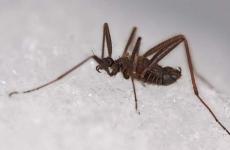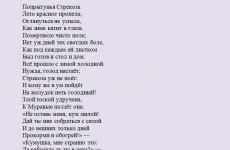Fire alarm: installation. Installation of security and fire alarm systems. Fire alarm installation
Fire alarm installation must be carried out in strict accordance following rules and standards. In another case, the device may not fulfill its main purpose - not to warn you in time about a fire and a threat to human life/health.
Fire alarm: installation according to the rules
According to the List of buildings subject to protection by fire extinguishing installations and fire alarms (NPB 11003, approved by Order of the Ministry of Emergency Situations of the Russian Federation dated June 18, 2003 No. 315), in administrative and residential buildings public purpose V mandatory Automatic fire alarms must be installed.
Some rooms (from 24 m² in area) must be equipped automatic installation fire extinguishing The need to install a fire alarm and notify about a fire in an apartment is not prescribed by law.
Figure 1 - Installation diagram of an alarm system in a private house
Fire safety systems: basic requirements
The main document defining system requirements automatic fire extinguishing, as well as fire alarm systems is the Federal Law “Technical Regulations on Requirements fire safety"(Art. 83).
Among others, the following requirements apply to fire alarm systems:
- installation of the ATP must be carried out in full accordance with appropriately developed and approved project documentation;
- ATP systems must automatically detect a fire or ignition, send control signals to the warning and evacuation control system, as well as to control devices for the operation of fire extinguishing installations, to the smoke protection system and other technical means;
- It is necessary to place fire detection equipment in a protected room, from which, however, determining the occurrence of a fire at any point in the room will not become problematic.
Besides Federal Law, the requirements for the ATP are also established by the following documents:
- SP 5.13130.2009. Set of rules. Systems fire protection. Fire alarm and fire extinguishing installations are automatic. Design standards and rules approved by Order of the Ministry of Emergency Situations of the Russian Federation dated March 25, 2009 N 175;
- SP 3.13130.2009. Set of rules. Fire protection systems. Warning and management system for evacuation of people in case of fire. Fire safety requirements approved by Order of the Ministry of Emergency Situations of the Russian Federation dated March 25, 2009 N 173;
- NPB 58 97. Fire safety standards. Fire alarm systems are addressable. Are common technical requirements. Test methods approved by Order of the Main Directorate for State Traffic Safety of the Ministry of Internal Affairs of the Russian Federation dated December 31, 1996 N 64.
IMPORTANT! As reference material you can also use the corresponding OKDP.
Figure 2 - Project OPS
Types of fire alarms
There are three types of fire alarms:
- threshold;
- targeted survey;
- addressable analog.
Threshold
The principle of the threshold fire alarm device is that each fire detector (sensor) has a built-in response threshold. Thus, the thermal sensor will work when a certain temperature threshold is reached, set individually for it.
The threshold system is designed in such a way that in the center of the so-called “star” there is a control panel with control loops (beams) extending from it, in each of which a a certain amount of sensors (in most cases there are no more than 30). If one of these sensors is triggered, the entire device loop will also trigger. But you must further search for the localization of the fire with your own hands - the automation of the system is limited to this.
System advantages: the equipment is inexpensive.
Flaws: low information content of the system, as well as the inability to monitor the state of the sensor at any time.
Manufacturers: POLON-ALFA IGNIS 1030, IP 101/435-1-A1/2 “Expert”.
Targeted survey
If in a threshold fire protection system the control panel monitors changes in the loop parameter, then the addressable polling system independently generates requests about the state of system elements that are sent to the sensors. In address-interrogation signaling, the sensors are connected by a loop into a ring. The system can generate "Normal", "Fire" and "Fault" messages.
System advantages: greater information content, constant monitoring of the status of sensors. Also this type alarm system corresponds to the price-quality combination.
Flaws: The system reacts to a fire or fire later than the addressable analogue PS.
Manufacturer: Polon-Alfa Polon 4100 or Polon 4900.
Addressable analogue alarm system
This is the best PS so far. Not only does it have everything technical advantages previous types of PS, but also a number of its impressive advantages. The main difference between the system design is that the decision about an alarm signal is made not by the sensor itself, but by the control panel, which received a signal different from the norm.
There is a continuous connection between the control panel and the sensors, due to which the panel constantly receives changes in the monitored parameters and analyzes any changes.
System advantages: detection of fire at an early stage, less consumption of materials during installation, less installation work, continuous monitoring of the performance of sensors.
Flaws: Quite a price.
Manufacturers: Bosh FPA-1200.
Fire alarm installation standards
All necessary rules Fire alarm installations are set out in the publicly available document SP 5.13130.2009. Set of rules. Fire protection systems. Fire alarm and fire extinguishing installations are automatic.
This document should not be understood as a guide to installing ATP yourself. Work must be carried out exclusively by certified companies and with the approval of the installation project by higher authorities.
We will give an example of rules for installing a water or foam fire extinguishing device.
The first group of premises includes book depositories, libraries, circuses, shops, office buildings, hotels and hospitals.
The irrigation intensity of the protected area in them should be at least 0.08 l/(s*m²), and the water flow rate should be at least 10 l/sec. In the event of a fire, the water supply should be at least 30 minutes, and the maximum distance between sprinklers should not exceed 4 m.
If the height of the protected room is up to 3.5 m, one detector can monitor up to 85 m² of such area. In this case, the distance when installing the detector to the wall must be at least 4.5 m.
Installation security and fire alarm system can be carried out with:
- room temperature +20°C;
- organization of supply and exhaust ventilation;
- relative air humidity up to 60%;
- noise level not higher than 65 dB.
The cost of installing a fire alarm is approximately calculated taking into account the area of the protected room, as well as the system option.
So, for example, for a room area of up to 150 m², the price will be from $12 to $20 per square meter.
When installing an addressable fire alarm, the coefficient will be 0.7-1.2.
To calculate the cost of work, it is necessary to multiply the area of the room in need of protection by the price, and then by the coefficient.
So, with a room area of 45 m², the minimum cost of work will be $378.
This price will also include warranty service for the ATP by the installer company.
$ Cost of work
- Kyiv - from 100 UAH/m² (including a correction factor of 1);
- Moscow - from 350 rubles/m² (including a correction factor of 0.7).
Fire alarm installation. VIDEO
For the safety of people and things, firefighters and security alarms. But simply purchasing them is clearly not enough. It is also necessary to install a security and fire alarm system. Therefore, within the framework of the article, attention will be paid to both general issues, as well as individual aspects and nuances.
What are burglar and fire alarms?
Installation of these systems is complex, and before you begin, you need to understand what you have to deal with. So, they are a complex technical means, which are used to timely detect fire, as well as unauthorized entry into the protected area. If problems are detected, a signal is sent to the control room to send a detachment rapid response and are activated mechanical methods influence (if we talk about fire alarms, then the automatic fire extinguishing system starts).
Categories
 We know what burglar and fire alarms are. Installation of this security complex can be carried out in three approaches, which depend on the categories of equipment:
We know what burglar and fire alarms are. Installation of this security complex can be carried out in three approaches, which depend on the categories of equipment:
- Designed for centralized management. This means having a computer with a special software, which manages all technical details.
- Equipment designed to collect and process information that comes from sensors. These include fire and security control panels.
- Directly the sensors themselves, which record disturbances in activity, as well as warning devices (for example, loudspeakers).
Installation usually differs from security ones in the location of the sensors. So, for the safety of the premises, it is necessary to control the windows, monitor whether anyone moves at the wrong time, and carry out many other operations. Whereas to monitor fires, it is enough to simply place sensors on the ceiling, maintaining a certain distance in order to cover the entire area as efficiently as possible.
Integration
Their connection is carried out at the level of centralized management and monitoring of the system. At the same time, they are administered by independent divisions or posts. In this way, their autonomy is preserved. If a small object is being monitored, then all the necessary tracking functions can be performed automatically. In such cases, control panels bring invaluable benefits. They allow you to receive alarm notifications, generate problem messages, and also transmit them to centralized monitoring stations. Depending on the complexity of the integrated system used, other components of the automated complex may also be notified of problems. Moreover, if the installation is something more or less real, then with security everything is not so easy.
Implementation problems
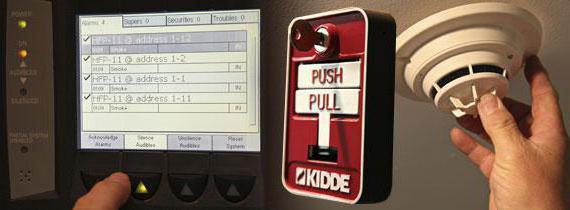 Let's imagine that there is a fire at the facility. We'll find out about him. Relatively easy and cheap to place on it automatic system extinguishing fires. This only requires tanks with a fire extinguishing mixture, and a method of supply to any location. But with security everything is much more complicated. So, let's say that someone broke into the facility (or, more precisely, into the research laboratory). Security will be notified about the presence of someone else, a rapid response team will leave, but by the time they arrive at the scene, it will turn out that there is no one there. A unique solution can be found in the most advanced places on the planet in this matter: the treasuries of countries and mints. So, if there was an unauthorized entry and the security system was hacked, it is provided that the hitherto passive security system is activated, which closes all possible exits again. But this is expensive and difficult to implement, so you can’t expect that something like this can be seen in many places. Now let’s find out what is needed to ensure a high-quality installation of a security and fire alarm system.
Let's imagine that there is a fire at the facility. We'll find out about him. Relatively easy and cheap to place on it automatic system extinguishing fires. This only requires tanks with a fire extinguishing mixture, and a method of supply to any location. But with security everything is much more complicated. So, let's say that someone broke into the facility (or, more precisely, into the research laboratory). Security will be notified about the presence of someone else, a rapid response team will leave, but by the time they arrive at the scene, it will turn out that there is no one there. A unique solution can be found in the most advanced places on the planet in this matter: the treasuries of countries and mints. So, if there was an unauthorized entry and the security system was hacked, it is provided that the hitherto passive security system is activated, which closes all possible exits again. But this is expensive and difficult to implement, so you can’t expect that something like this can be seen in many places. Now let’s find out what is needed to ensure a high-quality installation of a security and fire alarm system.
Implementation
 So, in order for us to have high-quality security and fire alarms, installation and maintenance must be carried out by professional technicians. If you have a plan to take care of the house yourself (or even a shed), then you need to carefully study all the information you can get. It is also necessary to draw up a project plan, which will be carried out taking into account the regulatory documents that are currently in force, and also to coordinate the installation with permitting government authorities (this applies primarily to professional services). For installation, it is best to use certified equipment, since homemade products can pose a certain danger if they were created by an inexperienced person. And at the very end, it will be necessary to correct all inaccuracies, solve problems and draw up technical documentation. In the future, it will only be necessary to maintain the mechanisms and maintain their functionality. It is highly advisable for the same person (or company) who carried out the setup to support the operation. He must be technically competent.
So, in order for us to have high-quality security and fire alarms, installation and maintenance must be carried out by professional technicians. If you have a plan to take care of the house yourself (or even a shed), then you need to carefully study all the information you can get. It is also necessary to draw up a project plan, which will be carried out taking into account the regulatory documents that are currently in force, and also to coordinate the installation with permitting government authorities (this applies primarily to professional services). For installation, it is best to use certified equipment, since homemade products can pose a certain danger if they were created by an inexperienced person. And at the very end, it will be necessary to correct all inaccuracies, solve problems and draw up technical documentation. In the future, it will only be necessary to maintain the mechanisms and maintain their functionality. It is highly advisable for the same person (or company) who carried out the setup to support the operation. He must be technically competent.
Sensors
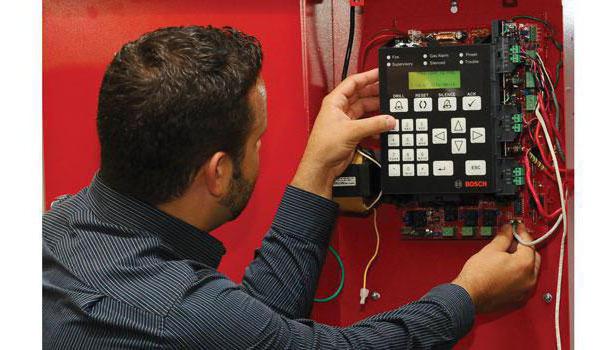 We know what the security and fire departments are and support their work, as well as who should support their functioning. Sensors, as well as connecting wires, are the key components of the system, which determine the reliability of its operation as a whole. At the same time, they are laid in such a way that they are not conspicuous. To be sure, use cables with at least two cores. There is considerable choice in the type of sensors used. You can stick with the good old reed caps. Although, if we talk about the kitchen, then we need elements that can react not only to heat, but also to smoke. It would be highly desirable to place motion sensors near places where valuables are stored. Fortunately, the cheapest options cost only a few hundred rubles, so if you want, you can use the whole house. Also, in order to have an idea of whether they are working or not, you can choose devices equipped with a signal diode. In case of failure, they will immediately report problems.
We know what the security and fire departments are and support their work, as well as who should support their functioning. Sensors, as well as connecting wires, are the key components of the system, which determine the reliability of its operation as a whole. At the same time, they are laid in such a way that they are not conspicuous. To be sure, use cables with at least two cores. There is considerable choice in the type of sensors used. You can stick with the good old reed caps. Although, if we talk about the kitchen, then we need elements that can react not only to heat, but also to smoke. It would be highly desirable to place motion sensors near places where valuables are stored. Fortunately, the cheapest options cost only a few hundred rubles, so if you want, you can use the whole house. Also, in order to have an idea of whether they are working or not, you can choose devices equipped with a signal diode. In case of failure, they will immediately report problems.
Conclusion
![]() If you decide to do everything yourself, take into account government regulations. They contain provisions that at first glance may seem too lenient, but this is a misleading impression. Thus, they provide for the option of using the room by smokers with the possibility of a false alarm, and also provide technical recommendations for the placement of system elements. And in general there is a number useful information, which will be useful to those people who do not have good experience in this domain.
If you decide to do everything yourself, take into account government regulations. They contain provisions that at first glance may seem too lenient, but this is a misleading impression. Thus, they provide for the option of using the room by smokers with the possibility of a false alarm, and also provide technical recommendations for the placement of system elements. And in general there is a number useful information, which will be useful to those people who do not have good experience in this domain.
A properly installed fire alarm is the key to the safety of your property and your own safety. On modern market several effective systems, working on different principles. Explore the features available options, select the most suitable type of fire alarm, and then read the guide for calculating and installing sensors and what to do in case of a false alarm.
There are systems that use smoke and heat sensors. The principle of operation of the devices is clear from their name: thermal sensors are triggered when the temperature rises, while smoke sensors are activated when smoke forms within their range. The sensors can be directly powered by special control and control devices or batteries.
Good for home addressable analogue system, and address-interrogation signaling. Installations of the addressable survey type find fires as quickly as possible. Modern addressable analogue alarms are able to determine the location of the fire and even take some actions, for example, turn off ventilation system, close or open everything in the house, turn on the sound alarm, etc.
Modern ones are available for sale fire alarms with built-in GSM transmitter. In the event of a fire, such a system will call or send an alarm message to a specified number. This will give the owner the opportunity to immediately call fire service and come home in person. Modern GSM systems can be programmed to notify several phone numbers at once, which is very convenient.
The nuances of installing and maintaining a fire alarm system
Fire detectors must be installed on every floor and in every room of the house. Attics and basements are also no exception. The best place The ceiling is used to place fire alarm sensors.
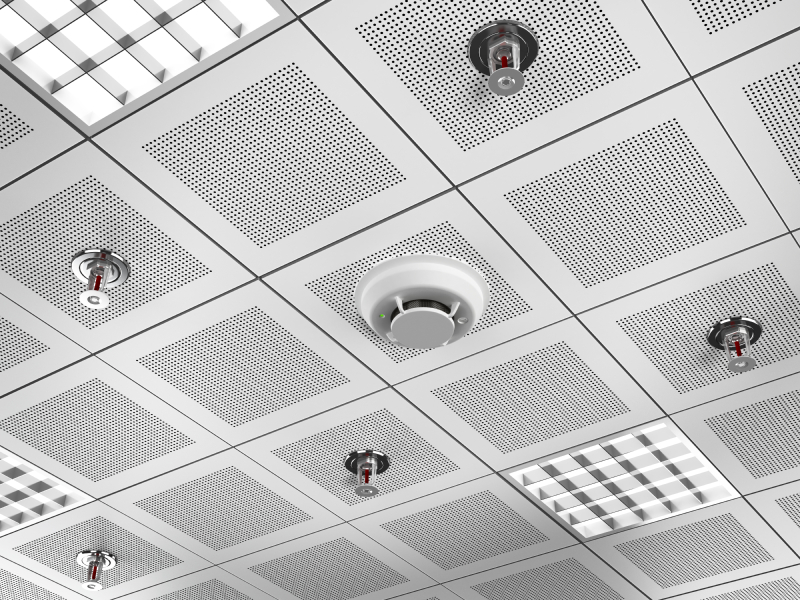

You can install the sensors yourself, but if possible, it is better to entrust this work to a licensed company.
Once installed, the alarm system will require regular maintenance. If the sensors are powered by batteries, check the functionality of the controllers every month. The batteries themselves usually use up their life in a year. It is recommended to replace the sensors with new ones at least every 7-10 years.
If the system elements are powered by a lithium battery, the sensors must also be tested monthly. If it is necessary to replace the battery with a new one, all warning devices must be replaced at the same time.
If your apartment or house has a wired system, check its serviceability every month. The power supply needs to be changed annually. The service life of the entire system is on average 7-10 years.


When installing a fire protection system, pay attention special attention cross-section and location of cables. Consider the fact that in the future you may want to redesign rooms or make basic repairs. Try to think things through so that any repairs can be performed without making changes to the alarm system configuration.
Provide reliable protection systems from various kinds unacceptable external damage (damage from insects, chemicals, etc.). The norms and rules for installing the systems in question are dictated by the relevant GOSTs. Carefully study the current regulatory documentation before starting installation work.
Buy equipment only from verified and licensed suppliers. Alarms of dubious manufacture usually behave unpredictably. For example, they often operate without any hint of a fire, but during a real fire they remain stubbornly silent. Therefore, do not skimp on your own safety and buy a quality system from famous manufacturer. All the same, the alarm system will not have to be replaced very often.
After installation, set your alarm to service maintenance. To do this, it is better to contact a specialized company.
In preparation for installing a fire alarm, a number of special calculations must be performed. They will help you choose the most best option systems and avoid unnecessary costs during installation and maintenance of sensors.
One of the most important stages alarm calculation is Determining suitable power supply capacity. Decide which energy source will be most convenient for you to connect the sensors to. There are quite a lot of such sources: from ordinary batteries to solar batteries.


The required battery capacity is indicated in the instructions for the alarm. Check the value found with the information on the battery case. If the battery capacity is not enough, purchase a more powerful battery or connect several batteries in parallel.
If you connect multiple batteries in parallel, make sure their voltage is the same. Otherwise, the total capacity of the battery circuit will decrease.
Specify required section wires for connecting fire alarm sensors. This information is usually provided in the system manual. Also pay attention to indicators such as battery capacity for standby and alarm modes. Add these values up and you will get the total required battery capacity specifically for your system.
Connecting an alarm using the example of typical sensors
First stage . Define required quantity alarm sensors. To determine the required number of controllers, you need to know the area of the room served and the ceiling height. In the current regulatory documentation it is said that if the ceiling has a height of no more than 350 cm, then one sensor is sufficient to service 80 m2. At the same time, fire safety rules require that even in the most small room there were at least two controllers. Follow the last rule.
Second phase. Mark locations for installing fire detectors. The maximum permissible distance from the wall to the sensor is regulatory documents is 450 cm. The sensors themselves must be installed in increments of at least 900 cm. This rule is relevant for situations where the ceiling is single-level and its height does not exceed 350 cm.
Wall-mounted models of fire sensors should be placed at a distance of 200 mm from the ceiling surface.
Third stage. Fix the sensors at the marked places and connect them to the power source using two-wire wires. The sensors are connected to each other in series. You need to install a resistor in the terminal block of the last controller.
Fourth stage. Test each sensor after connection. To do this, light a candle and pass its flame near the detector.
If the fire alarm goes off without any sign of a fire, you need to perform several simple actions to turn it off. Otherwise, loud sound alerts and the activation of unnecessary additional funds will cause you a lot of trouble.
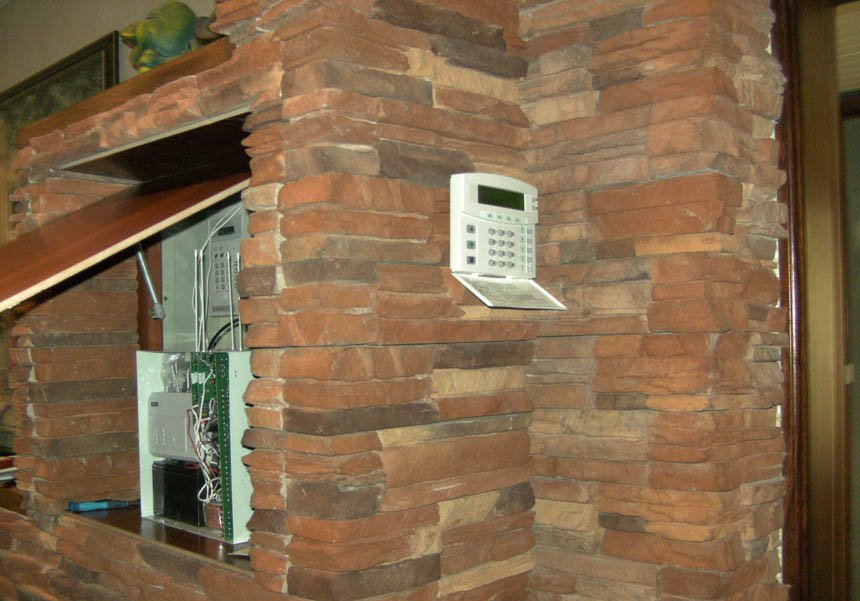

First option. Find out why the alarm went off in the first place. You cannot turn off the system without first checking all serviced premises. Quality systems extremely rarely they work without any reason. Maybe there was smoke or a real fire in some room of the house. If there is an “irritant”, eliminate it, and the system will turn off on its own. Be sure to check the condition of the electrical wiring.
Second option. If you have not found any reasons for the alarm to go off, proceed to turn it off. The shutdown procedure depends on the type of specific system. The simplest option is to disconnect the alarm from the power source. However, this option can be considered solely as a temporary solution to the problem, because With a disabled alarm, you are jeopardizing the safety of your home and everyone in it.
Third option. If your home has a centralized control panel, turn off the alarm from it. In some situations this procedure requires entering a special code. If you don't know it, contact the company that services your fire alarm.
Fourth option. If the controller becomes very dusty, for example, when repair work, to turn it off, it will be enough to remove the front panel from the sensor and rub its “insides” with a cotton swab lightly moistened with alcohol. If this was the problem, after such cleaning the alarm will turn off. From now on, monitor the condition of the sensors and clean them promptly.
Fifth option. If you need to turn off the fire alarm in a particular room, you can wrap the sensor with adhesive tape. However, after such processing the controller will become useless. Remove the tape immediately after identifying and correcting the problem.
Sixth option. If none of the above helped, use the most radical solution - cut the wires connected to the sensor. The fire alarm will turn off, but will become completely useless until you repair it. Try to figure out the cause of the false alarms of the sensors as quickly as possible and eliminate the malfunctions.
If this is possible, contact a specialized company. Its employees will diagnose the fire alarm system and give recommendations on further actions from your side.
Thus, in self-installation There is absolutely nothing complicated about fire alarms. You just need to understand in detail the sequence of connecting the sensors and follow the instructions. Be sure to check the manufacturer's recommendations. Many modern systems have a number of features that need to be clarified separately. Your safety depends on the correct installation and connection of sensors, remember this.
Good luck!
Video - DIY fire alarm installation
Fire alarm installation is necessary for timely notification of people about a possible fire at an enterprise, in a building, in an apartment, in a cottage and even in a country house. Such fire protection systems ways not only to notify people about a fire, but also to start turning off the fire in a timely manner supply ventilation and air conditioning, turn off operating equipment and turn on the fire extinguishing system, so installing a fire alarm is extremely important for any building and premises.
Fires have always been a great danger. Even 100 years ago they could have turned into the present disaster. It is impossible to completely insure against them, even if you do everything protective measures. The causes may be short circuit V electrical circuit, unextinguished cigarette, faulty electrical appliances and much more. Modern means security ensures early stages signal a starting fire.
Features of installation of security and fire alarm systems
Price-quality ratio. Do you already have a project from another company? I'm sure I can sell it cheaper than my competitor offers. The cost of my work is 15-30% lower
Installing a fire alarm system will give you confidence in the safety of property and lives. If you decide to save money, you can suffer irreparable losses. Therefore, work related to fire alarms should only be trusted to specialists.
For reliable operation of such a system, it is necessary to perform the following processes:
- Create a project. It is taken into account that in some rooms installation of the system is not required. These are toilets, bathrooms, flights of stairs. It is also necessary to correctly understand the interpretation of rules and regulations for correct installation fire protection systems.
- Lay cable communications.
- Install equipment in planned locations.
- Carry out connection and check functionality.
- Pass fire alarm into operation.

The complexity of each stage depends on the type of equipment, the number of sensors, and integration with other systems. Fire alarm installation must be performed by highly qualified specialists and professionals in their field. This is the only way to be sure of reliable operation when critical situations arise. The fire alarm is in standby mode almost all the time, and no one can accurately determine its functionality. That's why it's important competent installation with a full system check after installation.
Who can do a professional fire alarm installation?
You are not communicating with an abstract “company representative”, manager or secretary. I take responsibility and am personally responsible to you for quality
Having been involved in security systems for many years, I consider myself a competent specialist, and cooperation with American partners has significantly expanded my knowledge. I have installed fire alarms at many sites. Having concluded an agreement with you, I will carry out competent design and carry out everything installation work. After this I will conduct a thorough testing of the system. Only after making sure that there are no even minor defects will the work be considered completed.
Fire safety comes first in any home or apartment. Today, when almost all devices operate on electricity, accidental fires in wiring are a fairly common occurrence. Of course, a fire alarm cannot prevent a fire, but it is within its competence to give a signal to the relevant services. Before you go to the store, let's look at what types of fire alarms there are, and what to do if you are sorely short of funds to purchase one?
The purchase of a fire alarm must be taken very responsibly. Remember that the safety of your property in the event of a fire depends on this. Each model has its own advantages and disadvantages, so understanding their characteristics is simply necessary.
The operating principle of all fire alarms is based on two types of sensors:
- smoke sensor;
- heat sensor.
Depending on the type of power supply, all systems can operate:
- from autonomous source energy;
- from a remote monitoring device or circuit.
Depending on their structure, fire systems can be:
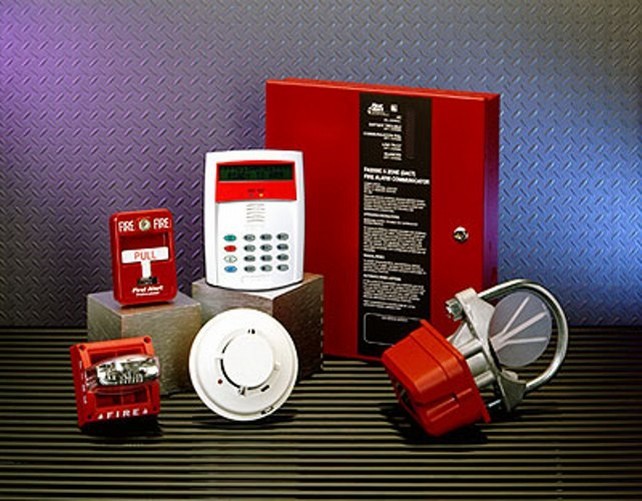
Advantages and disadvantages
Depending on what requirements you place on a fire alarm system, the choice of its model will depend. Each product has its own advantages and disadvantages in a given situation, so you will have to focus on your home.
Radial threshold systems
Systems of this class are considered the most budget-friendly, but their installation is expensive. If you have special skills and education, then you can do this yourself and then register the system with special services. If you don’t have such knowledge, you will have to fork out money to invite specialists to install this alarm.
But this is not the only drawback. The very first disadvantage that most consumers encounter is false signals. To avoid this, it is necessary to duplicate sensors, which leads to increased costs. 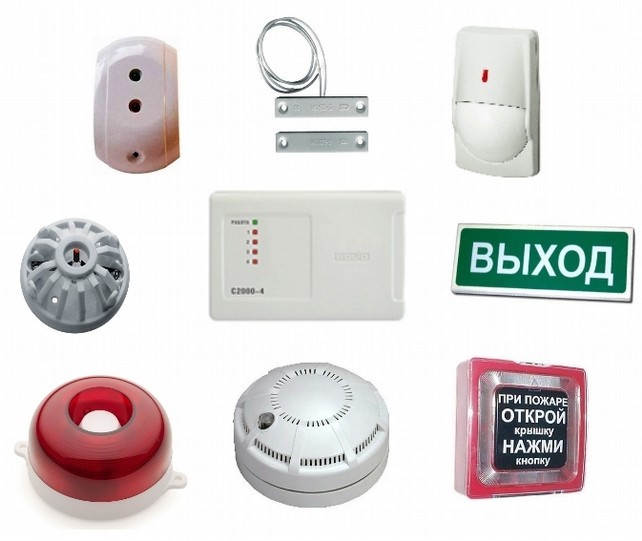
The next disadvantage of such a system is a certain response threshold, while the health of the system practically cannot be controlled by software. If these faults do not manifest themselves at the right time, then they can only be detected by manual inspection. 
Modular threshold systems
Systems of this class are more advanced. Any breakdown can be tracked on the computer, which will allow you to immediately take action and eliminate the problem.
The disadvantages include high cost installations and problems of the threshold signal, which are typical for the first type of fire alarms. 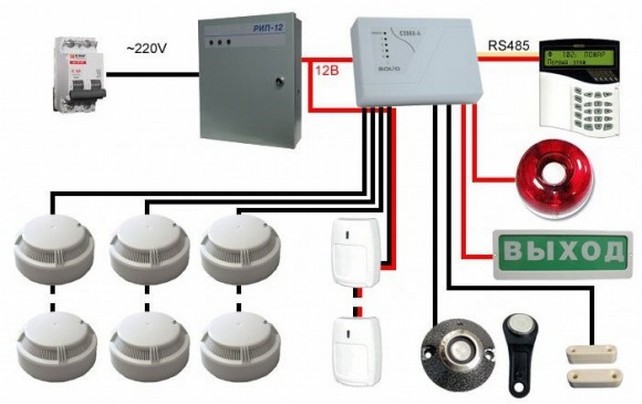
Addressable polling and analogue systems
Systems of this class have a completely different operating principle. The differences are that all sensors are assembled into one common module, this allows for better verification of the operation of the system. Compare, it is easier to send one signal to all sensors at the same time, or to do this with each element one by one.
But such a system also has its drawbacks. The alarm signal in this design is received with a slight delay, and in the event of a fire not even a second can be lost.
The analog addressable design differs from the addressable interrogation system in the number of sensors. In her case, there could be about 200 of them. This allows you to assess the surrounding situation and transmit data to check Point, which, in turn, detects a fire threat and transmits the appropriate signal. The malfunction of any sensor is also determined according to this principle, and the system will be fully operational. 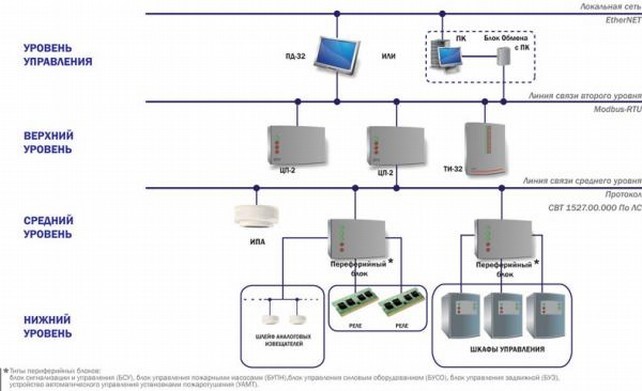
Combined security and fire systems
Systems of this class are considered the most expensive devices, allowing you to warn about fire situation. But such costs are completely justified, since such a design has greater capabilities for solving problems.
Maintenance and installation of such systems are also additional costs, but you get the ability to connect up to 1000 sensors to the fire safety cable, which allows you to justify the cost-effectiveness of the device. 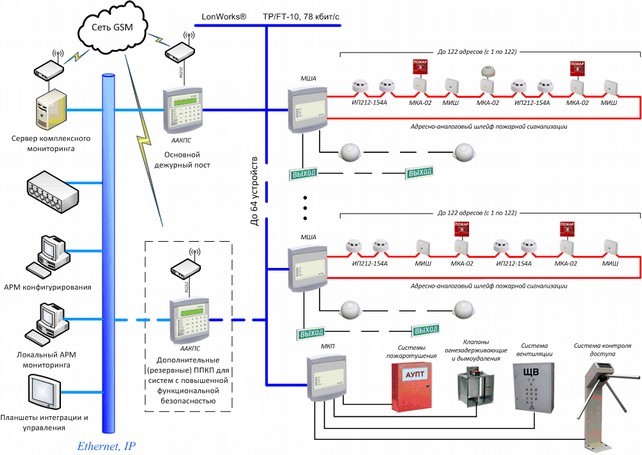
Based on the data presented, we can conclude that regardless of the cost of the device, its installation may cost you many times more. Therefore, consider your financial capabilities when choosing a fire system.
You can see how to connect a fire alarm with your own hands in the video presented.
DIY fire alarm
If you decide to equip your house or apartment with a fire alarm, then the right decision will be its acquisition. But what to do if your financial capabilities do not allow you to buy it, especially when the connection service is not cheap. The only way out of this situation is to make a fire alarm yourself.
By law, you can construct such a device yourself, but it will not interact with the Ministry of Emergency Situations or the police. The alarm will be sent to your phone, and you will be able to send a corresponding message to the fire services.
Sensors
Let's start with the sensors. They are a key component of the fire system, determining its reliability and efficiency. To connect them, it is recommended to use signal two- and multi-core cables in a round winding. Usually they are laid along the walls in such a way as not to spoil appearance premises. Alternatively, they can be hidden under decorative trim.
First of all, pay attention to the reed sensor. For equipping an apartment with a fire alarm, reed switch “caps” are suitable, which everyone has probably seen. For the kitchen, it is recommended to use a chip sensor that responds to heat and smoke. If you store valuables or papers in the room, then in their immediate vicinity it is necessary to install full-function sensors with motion detectors. 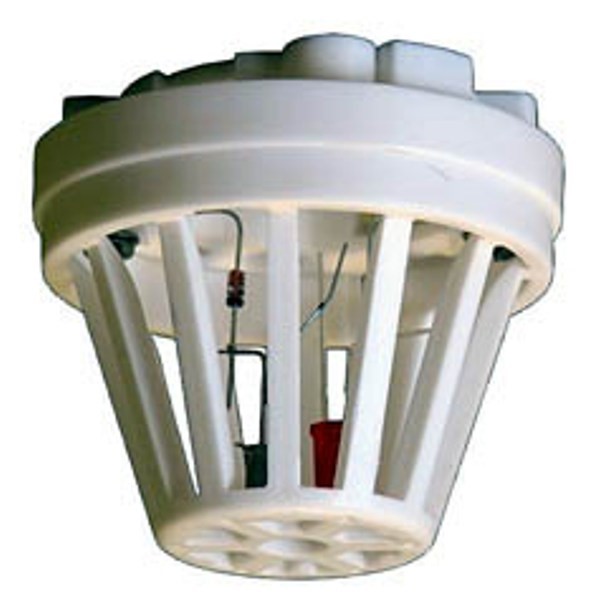
For equipping a private home, it is recommended to take sensors with motion detectors with a built-in control system installed on the lamp. In addition to scaring uninvited guests, you yourself will never stumble on an uneven surface in the evening, since the SPU will also provide you with lighting.
Most sensors are equipped with an LED, which is very convenient. You don't have to check every element with a tester if there are system problems. A sensor that is damaged or has become unusable will not light up. A malfunction can be indicated either by the sensor glowing or by its extinguishing. It all depends on the chosen model.
Accommodation
For the placement of fire alarm sensors, special standards have been developed that are considered quite liberal. Take a look at the figure below, this is convenient for a specific fire system configuration, but in reality, everything is much more serious.
When placing them on the wall, remember that the distance from them to the ceiling should not be less than 0.2 m. If this rule is ignored, then the sensor ends up in a smoke pocket and reacts, and as a result, you get a false call.
If the ceiling has beams, then the sensors must be installed on their lower edge, and not on the side parts or in the space between the beams. This will also help avoid false signals.
Unfortunately, the sensor cannot control the entire hemisphere, and its sensitivity will depend on the distance between the device and the fire source.
The height of the ceiling affects the monitored area of the sensor, which can be seen from the data presented.
Smoke sensor:
- With a floor-to-ceiling distance of 3.5 m, the controlled area is 85 square meters. m.;
- from 3.5-6 m – the sensor controls up to 70 sq. m.;
- from 6-10 m – up to 65 sq. m.;
- from 10 m – up to 55 sq. m.
Heat sensor:
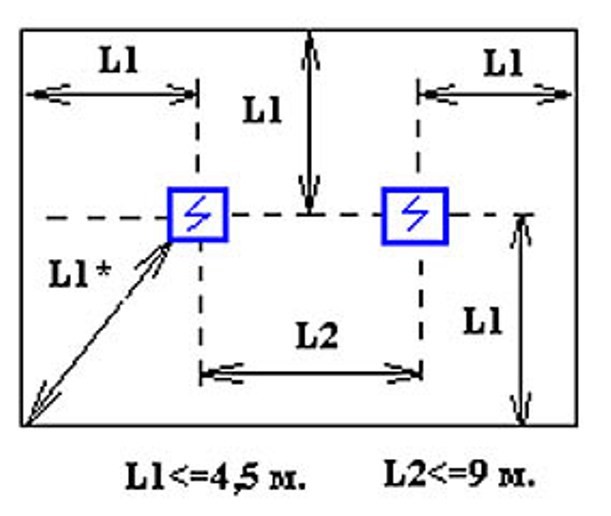
Connection
To connect the sensors, you must use the instructions for them. The resistor always ends the loop beam. Its value is always indicated in the instructions, but by default its value is 470 Ohms, although in some cases resistors of 680 Ohms or 910 Ohms may be needed. Let's look at a few examples.
In the first case, it is necessary to connect five-terminal IP-212 sensors, which have proven themselves well in a two-wire loop. This can be done based on the proposed scheme. 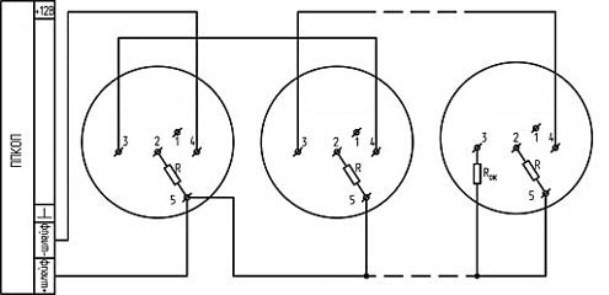
In the second case, you need to connect conventional sensors with one terminal block. In this case, the wires should enter and exit in a mirror manner to the previous diagram.
In the third case, it is necessary to connect sensors with two terminal blocks. The left block is intended for the cable. And the right block is intended for autonomous activation of the SPU. To understand the connection method, you can use the diagram. 
How to turn off the fire alarm
In some cases, the fire alarm may go off falsely. In order not to scare your neighbors with scary sounds, you need to figure out how to turn off the device.
- First, you need to find the reason why the alarm went off. If there is reason for this, there may be excessive smoke in the room, then it must be urgently ventilated.
- Secondly, if the alarm goes off without good reason, then you just need to turn it off. If you have simple design, then it will be enough to remove the power supply from the sensors. If the device is more modernized, you will have to go to the control panel and enter the appropriate code.
As a conclusion, we can say that installing a fire alarm can solve the problem of preserving your property. The main thing is to choose the right model according to your requirements. If the system accidentally works and takes you by surprise, and you don’t know how to turn it off, you can use in a radical way, cut the wires to the alarm itself. Of course it's not The best decision, since you will have to make a lot of effort to restore it, but it helps solve the problem.



